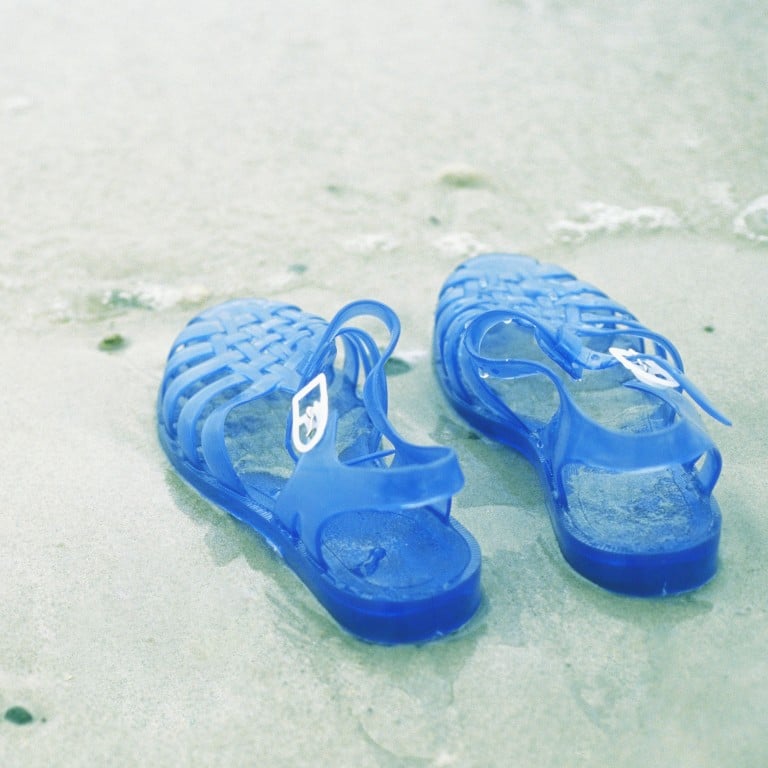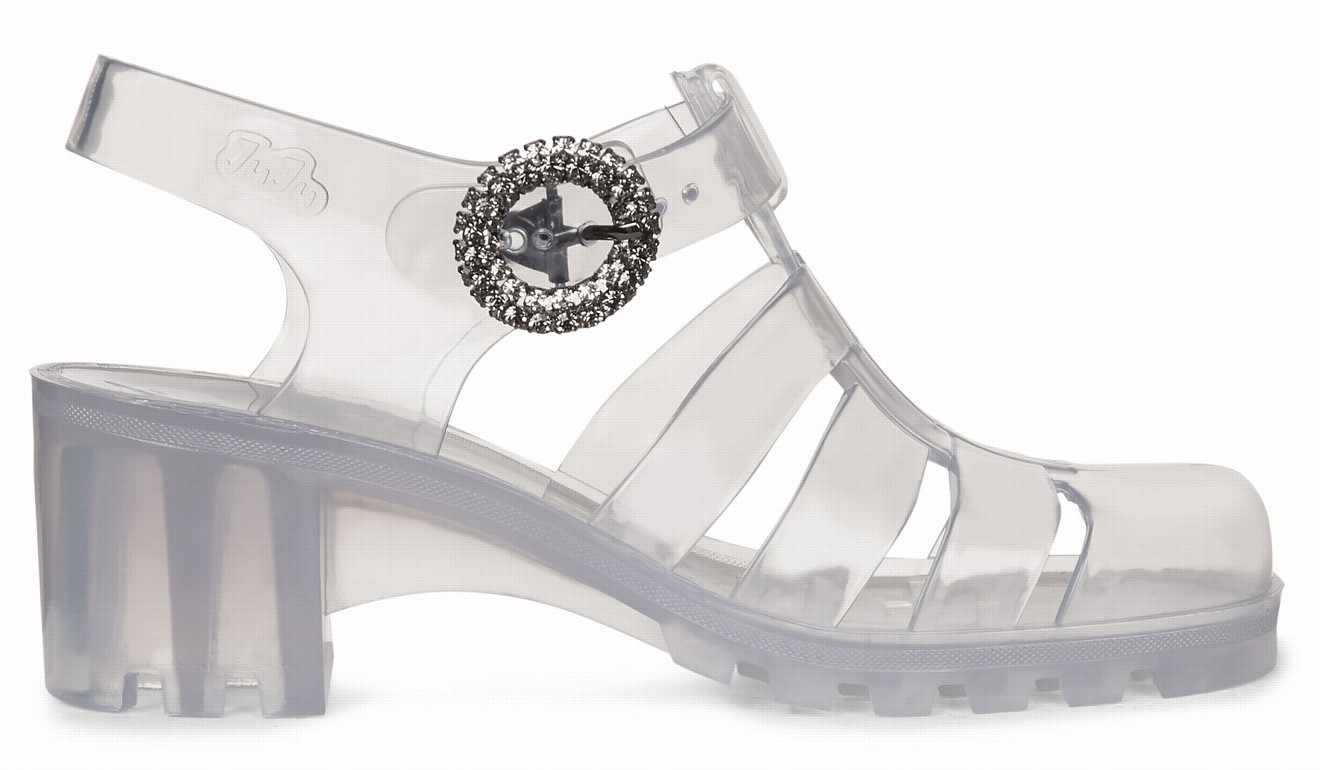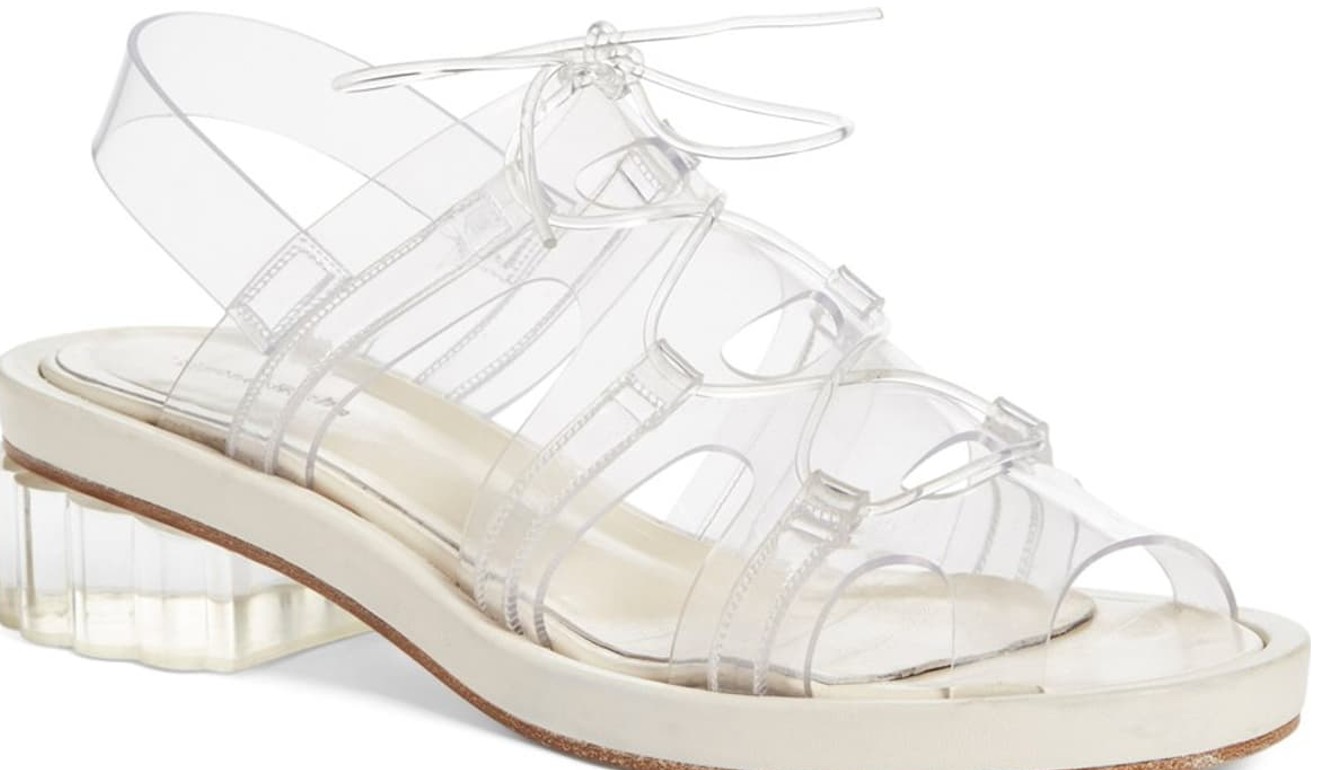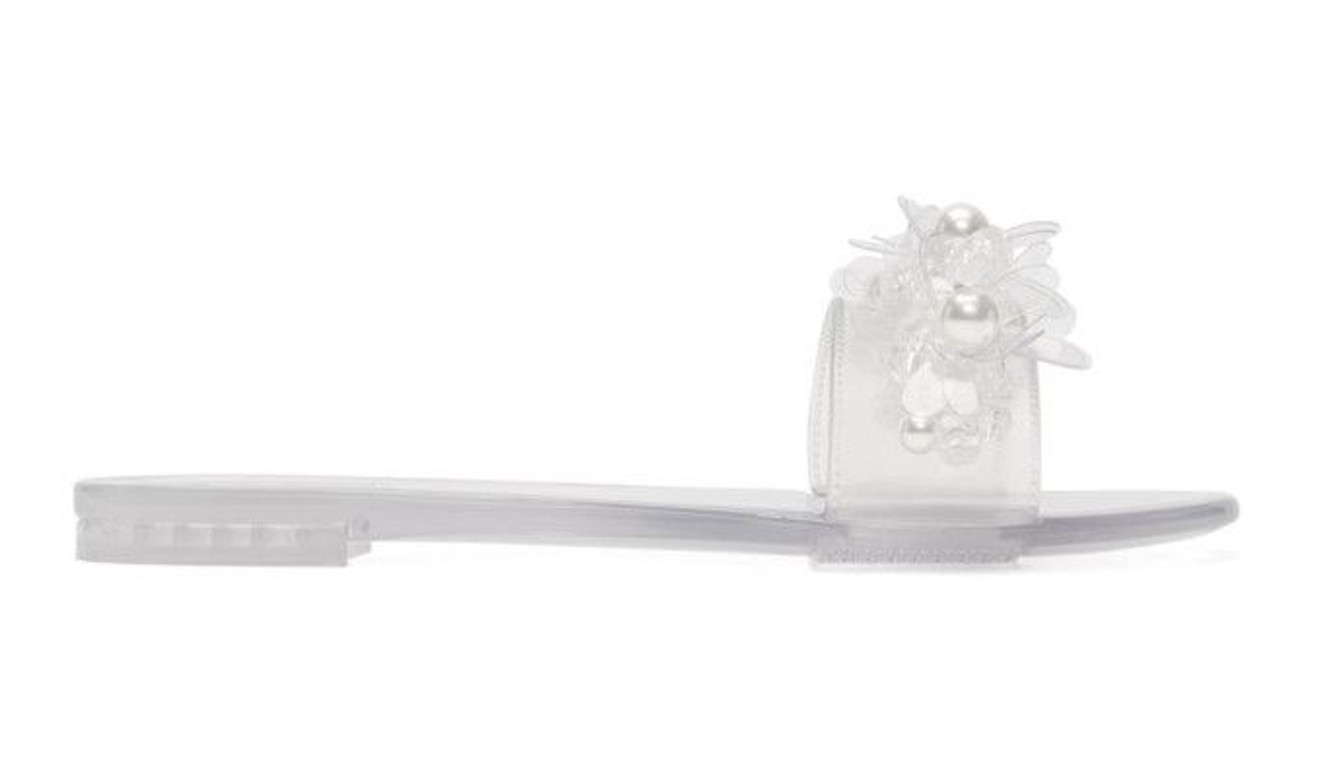
Unsustainable fashion? Jelly shoes: the PVC plastic footware that's on trend, and brands looking for solutions
- Online searches for jelly shoes have significantly increased on fashion shopping platform Lyst after the sandals dominated this season’s catwalks
- The shoes, made almost entirely of PVC, have sparked environmental concerns, though some brands are testing recycling options
The footwear equivalent of Crayola crayons and lunchboxes, the jelly shoe is back for the summer. But with most of the shoe made from PVC, it might seem an odd trend for our plastic-anxious times.
Online searches for jelly sandals have significantly increased since April on fashion shopping platform Lyst. The 82 per cent month-on-month increase comes after the sandals dominated the season’s catwalks. At Alexa Chung they came elevated with jewels, while jelly sliders were decorated with feathers at Simone Rocha.
There are plenty of high street versions available from Asos to Next and New Look, where prices start at around £6.00 (US$7.50).
“From a consumer perspective they’re a really fantastic summer proposition,” says Lynn Wilson, a consultant and consumer researcher. They come in bright colours and are a real “fashion statement”.

However, they are almost entirely made from the petrochemical-based material PVC, which, according to Greenpeace, is “one of the most toxic substances saturating our planet and its inhabitants”.
Crocs made with AstroTurf? That’s Chinatown Market
It is not the first time we have fallen for plastic footwear – from flip-flops to sliders, our water-friendly choices are often less than kind to the planet.
Natalie Fee, the founder of City to Sea, an environmental organisation campaigning to stop plastic pollution, says jelly sandals “epitomise the folly of fashionistas”.
“Why would you want to be seen in something made purely of fossil fuels, most likely from fracked gas, in the middle of a climate emergency?” she says.

Julian Kirby, a campaigner at Friends of the Earth, says: “Whether it’s jelly shoes or raincoats, the key thing from an environmental point of view is that it’s built to last. This is especially important with shoes, as poorly made ones barely last one holiday.”
“The key problem for consumers is when a brand says recyclable, what does that actually mean?” Wilson says.

Many may assume this means jellies can go out with their domestic recycling, but PVC is almost never recyclable through local councils and can contaminate other plastic recycling.
Some brands do offer solutions. Melissa is working on installing recycling collectors in all its stores by the end of 2020; in the meantime its store in London’s Covent Garden will take back the shoes.
A spokesperson for Juju said that while “there is no formal scheme in place for the consumer to recycle through us … if they are sent to our address and have been cleaned they can be added to our pile to be ground up and made into new shoes.”
Wilson says this engagement with the consumer is vital.
“We need the industry [to say,] ‘This is our ambition … this is where we’re at right now, this is what we need you to help us with.’ [Then] we can start to work towards this joint closed loop.”

